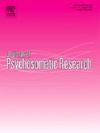Estimating cardiovascular mortality in patients with hypertension using machine learning: The role of depression classification based on lifestyle and physical activity
IF 3.5
2区 医学
Q2 PSYCHIATRY
引用次数: 0
Abstract
Purpose
This study aims to harness machine learning techniques, particularly the Random Survival Forest (RSF) model, to assess the impact of depression on cardiovascular disease (CVD) mortality among hypertensive patients. A key objective is to elucidate the interplay between mental health, lifestyle, and physical activity while comparing the effectiveness of the RSF model against the traditional Cox proportional hazards model in predicting CVD mortality.
Methods
Data from the National Health and Nutrition Examination Survey (NHANES) spanning 2007 to 2014 were used for comprehensive depression screening. The Patient Health Questionnaire-9 (PHQ-9) was employed to categorize depression severity levels among participants. The final cohort included 9271 participants, selected after excluding those with incomplete data. Participants were followed up for a median of 7.1 years, and cardiovascular mortality was assessed up to December 31, 2019. We employed the RSF model to predict cardiovascular mortality with high effectiveness and precision. And to ensure comparability, we developed the traditional Cox proportional hazards model using the same set of predictors.
Results
RSF model outperformed the Cox proportional hazards model in predicting cardiovascular mortality among hypertensive patients with varying depression levels. The RSF model's integrated area under the curve (iAUC) scores were 0.842, 0.893, and 0.760 for none, mild, and severe depression, respectively, surpassing the Cox model's scores of 0.826, 0.805, and 0.746.
Conclusion
The RSF model provides a more accurate prediction of CVD mortality among hypertensive patients with varying degrees of depression, offering a valuable tool for personalized patient care. Its ability to stratify patients into risk categories can assist healthcare professionals in making informed decisions, underscoring the potential of machine learning in public health and clinical settings. This model demonstrates particular utility in settings where detailed, patient-specific risk assessments are critical for managing long-term health outcomes. Future research should focus on external validation and integration of more diverse variables to enhance predictive power.
使用机器学习估计高血压患者的心血管死亡率:基于生活方式和身体活动的抑郁症分类的作用
目的:本研究旨在利用机器学习技术,特别是随机生存森林(RSF)模型,评估抑郁症对高血压患者心血管疾病(CVD)死亡率的影响。一个关键目标是阐明心理健康、生活方式和身体活动之间的相互作用,同时比较RSF模型与传统Cox比例风险模型在预测心血管疾病死亡率方面的有效性。方法:采用2007 - 2014年全国健康与营养调查(NHANES)数据进行抑郁症综合筛查。采用患者健康问卷-9 (PHQ-9)对参与者的抑郁严重程度进行分类。最终的队列包括9271名参与者,剔除了数据不完整的参与者。参与者的中位随访时间为7.1年,心血管死亡率评估截止到2019年12月31日。我们采用RSF模型预测心血管死亡率,具有较高的有效性和准确性。为了确保可比性,我们使用相同的预测因子建立了传统的Cox比例风险模型。结果:RSF模型在预测不同抑郁水平高血压患者心血管死亡率方面优于Cox比例风险模型。RSF模型无抑郁、轻度抑郁和重度抑郁的综合曲线下面积(iAUC)得分分别为0.842、0.893和0.760,超过了Cox模型的0.826、0.805和0.746。结论:RSF模型能更准确地预测不同抑郁程度高血压患者的心血管疾病死亡率,为患者的个性化护理提供了有价值的工具。它将患者分为风险类别的能力可以帮助医疗保健专业人员做出明智的决策,强调了机器学习在公共卫生和临床环境中的潜力。在详细的、针对具体患者的风险评估对管理长期健康结果至关重要的环境中,该模型显示出特别的实用性。未来的研究应注重外部验证和整合更多样化的变量,以提高预测能力。
本文章由计算机程序翻译,如有差异,请以英文原文为准。
求助全文
约1分钟内获得全文
求助全文
来源期刊
CiteScore
7.40
自引率
6.40%
发文量
314
审稿时长
6.2 weeks
期刊介绍:
The Journal of Psychosomatic Research is a multidisciplinary research journal covering all aspects of the relationships between psychology and medicine. The scope is broad and ranges from basic human biological and psychological research to evaluations of treatment and services. Papers will normally be concerned with illness or patients rather than studies of healthy populations. Studies concerning special populations, such as the elderly and children and adolescents, are welcome. In addition to peer-reviewed original papers, the journal publishes editorials, reviews, and other papers related to the journal''s aims.

 求助内容:
求助内容: 应助结果提醒方式:
应助结果提醒方式:


